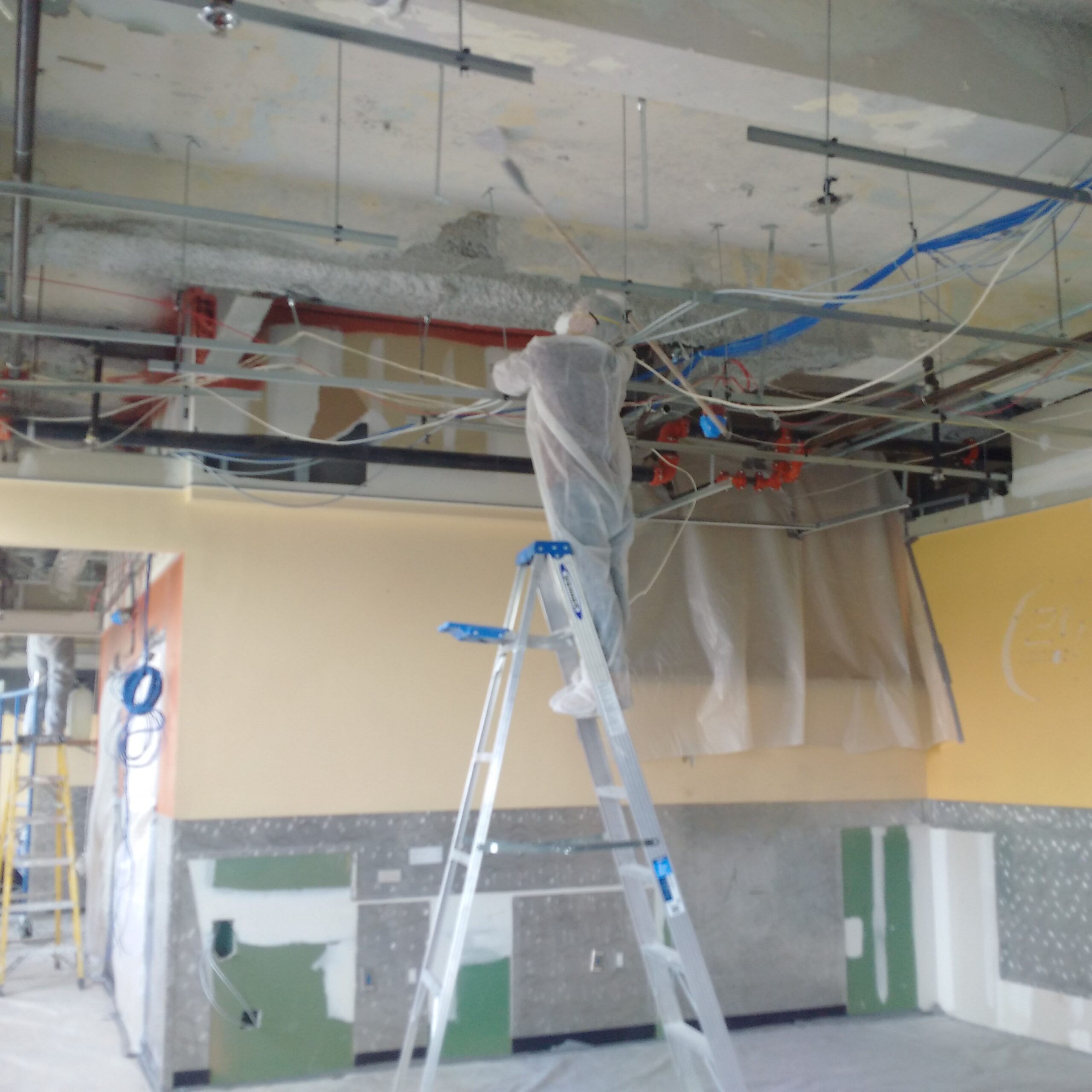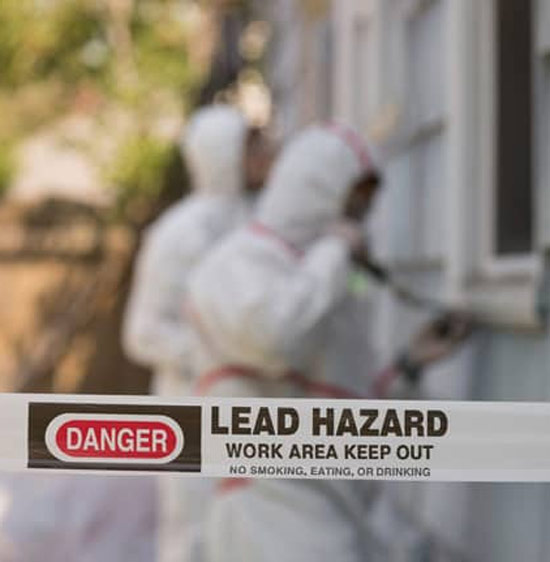Reputable DOH & HPD Lead Violation Removal in NYC-- Secure Your Residential property
Wiki Article
Comprehensive Guide on Effective Lead Violation Removal Methods
In the world of ecological safety and security, addressing lead violations demands a precise and structured technique. This detailed overview starts by highlighting the essential first actions of recognizing lead hazards through advanced assessment and testing methods. Techniques such as XRF analysis and dirt clean tasting are indispensable in pinpointing contamination sources. The overview clarifies on the importance of adhering to rigorous safety and security protocols throughout the removal procedure, consisting of the use of correct PPE and isolating impacted locations. The subsequent sections promise to review post-removal verification and precautionary methods, guaranteeing long-lasting security and conformity. Discover the complex details that make these techniques not simply efficient but essential.Determining Lead Threats
Identifying lead threats is an important primary step in mitigating the dangers connected with lead exposure. Lead, a harmful steel, can be present in different ecological tools, including paint, soil, water, and dirt. It postures severe health and wellness threats, particularly to kids and expecting females, resulting in neurological damage and developing hold-ups. For that reason, exact recognition of potential lead sources is vital for reliable removal.The preliminary stage in determining lead dangers entails recognizing usual lead resources within the constructed setting. Frameworks constructed prior to 1978 are specifically prone as a result of the widespread usage of lead-based paint throughout that duration. Furthermore, dirt contamination can occur from deteriorating outside paint, commercial exhausts, or historical usage of leaded gasoline.
Another substantial source is lead piping and pipes components, which can leach introduce alcohol consumption water. Customer products such as playthings, ceramics, and imported items may likewise have hazardous lead levels. Notably, occupational settings and leisure activities including lead can track contaminants right into homes.
Analysis and Testing
When addressing lead threats, reliable evaluation and screening are vital. This important step makes certain the recognition and quantification of lead visibility, consequently guiding succeeding remediation initiatives. Preliminary assessment commonly includes an aesthetic assessment to identify prospective lead sources, such as wearing away paint or contaminated dirt. This is complemented by even more rigorous testing methods to determine the level of contamination.
Dirt wipe sampling is one more essential method, especially in residential settings. By gathering examples from floorings, windowsills, and various other surfaces, this method offers insights right into prospective direct exposure threats. Furthermore, soil testing around building perimeters is necessary to identify lead contamination that could pose risks, particularly to kids.
Safe Elimination Treatments
Upon completing extensive evaluation and testing, executing safe removal treatments is the following important stage in attending to lead risks. This process ensures that lead-contaminated products are properly and securely removed, reducing risk to both employees and homeowners. The initial step involves separating the damaged location utilizing plastic sheeting and correct sealing methods to stop the spread of lead dirt.Employees should wear proper personal protective devices (PPE), consisting of respirators, handwear covers, and disposable coveralls, to minimize direct exposure. Employing specialized tools and wet approaches, such as damp sanding or making use of HEPA-filtered vacuums, reduces the diffusion of lead particles. It is essential to stay clear of dry fining sand or rough blasting, as these techniques can generate unsafe lead dust.
Garbage disposal is one more essential element; all contaminated products must be firmly bagged and classified according to EPA and local guidelines. Additionally, detailed cleaning of the workspace with HEPA vacuum cleaners and wet cleaning ensures the removal of recurring lead particles.
Post-Removal Confirmation

Verification of successful lead elimination, recognized as post-removal verification, is imperative to make sure the safety and security and habitability of the remediated area. This procedure entails a series of precise analyses and tests developed to identify any type of recurring lead fragments that may position wellness threats. The initial step commonly includes a visual evaluation to analyze the completion and high quality of the removal job. This inspection makes sure that all well-known sources of lead have been attended to which no visible indications of contamination remain.
Adhering to the aesthetic inspection, environmental tasting is performed. This entails collecting dust, soil, and in some cases water examples from the remediated location. Approved labs assess these examples to determine lead degrees, ensuring they fall below the safety limits developed by regulative bodies such as the Epa (EPA)
On top of that, air high quality testing may be executed to identify air-borne lead bits, especially in instances where extensive lead-based paint elimination or restoration has taken place. The outcomes of these tests provide measurable data confirming that the lead degrees are within Lead Paint Removal Service acceptable limits.
Ultimately, post-removal confirmation functions as a vital checkpoint, validating the performance of the lead abatement efforts and guarding the health and wellness of occupants and site visitors.
Safety Nets and Upkeep

A crucial preventive procedure includes using lead-safe certified specialists for any kind of restoration, repair, or painting tasks. These professionals are learnt techniques that minimize lead dirt and particles. Additionally, preserving coloured surfaces to stay clear of chipping or peeling is crucial, as weakening paint can launch lead fragments into the atmosphere.
Educational campaigns targeting homeowner and renters relating to the threats of lead and the importance of reporting any type of prospective threats can further enhance precautionary initiatives. Regular cleansing using HEPA vacuums and wet wiping methods can significantly reduce lead dust build-up.
Final Thought
In recap, reliable lead offense elimination demands a meticulous approach encompassing extensive evaluation, exact screening, and rigid elimination treatments. Making certain safety through appropriate isolation and personal safety tools continues to be critical. Post-removal confirmation by means of ecological sampling and air high quality testing validates compliance with established safety standards. Continuous evaluations and maintenance are vital to reduce future lead risks, thus protecting public health and making certain sustained compliance with governing demands.Report this wiki page